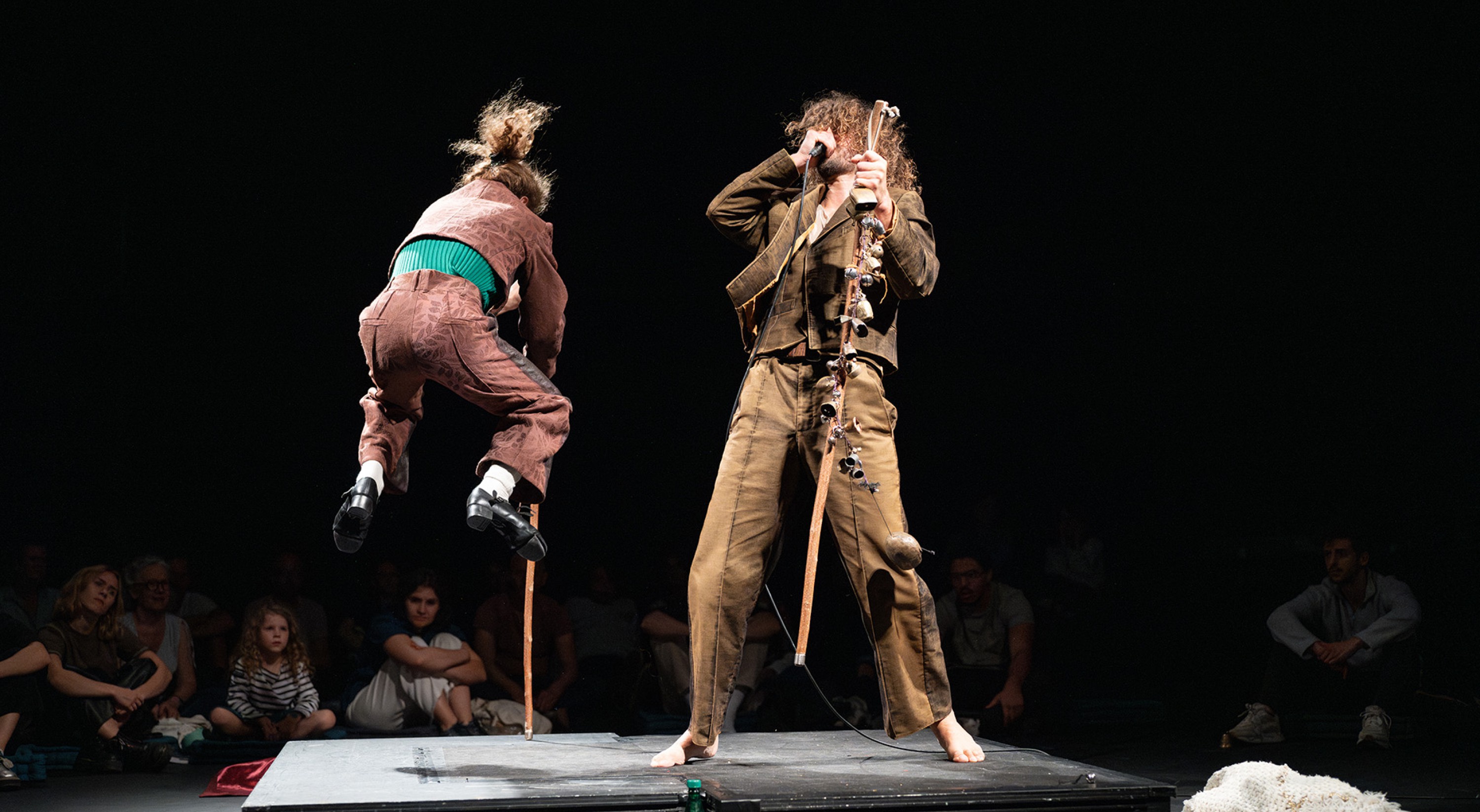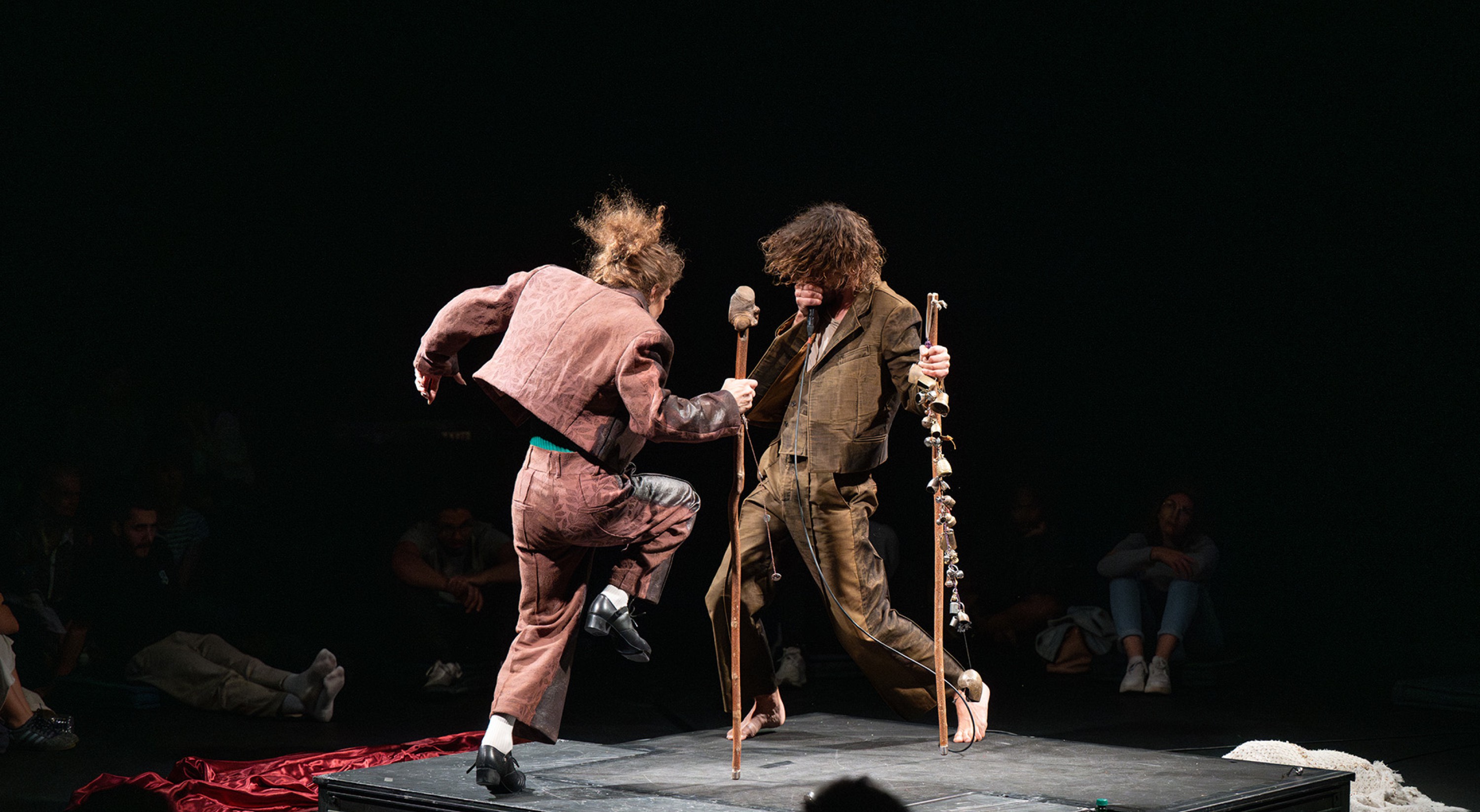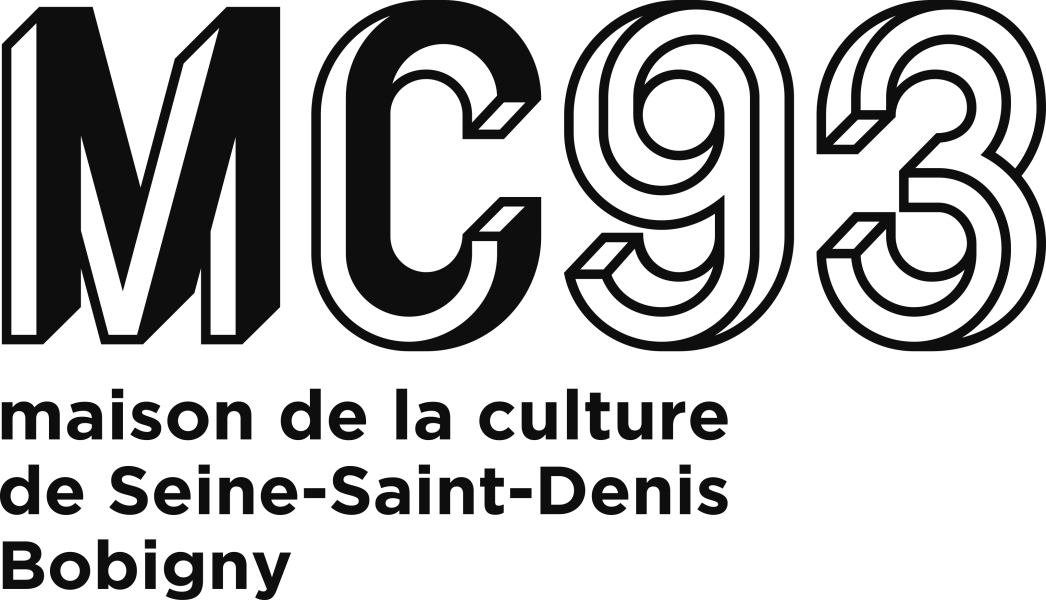Aymeric Hainaux François Chaignaud
Mirlitons
octoberoct 11 – 22
Conception and interpretation, Aymeric Hainaux and François Chaignaud
Artistic collaboration, Sarah Chaumette
Costume design, Sari Brunel
Light creation, Marinette Buchy
General management, Marinette Buchy and Anthony Merlaud
Sound manager, Jean Louis Waflart, Patrick Faubert
Coproduction MC93 - Maison de la Culture de Seine-Saint-Denis ; Festival d'Automne à Paris; Charleroi Danse; Maison de la Danse, Lyon - Pôle européen de création; NEXT Arts Festival Theater Rotterdam ; Bonlieu Scène nationale Annecy ; Triennale di Milano ; KunstFestSpiele Herrenhausen Hannover
With the support in residence of Espace Pasolini/Laboratoire artistique - Valenciennes; La Villette (Paris) - Initiatives d'Artistes; Malraux, Scène nationale de Chambéry Savoie; Les Aires -Théâtre de Die et du Diois, scènes conventionnées d'intérêt national - " Art en territoire
Mandorle productions is subsidized by the Drac Auvergne-Rhône-Alpes / ministère de la Culture; Auvergne-Rhône-Alpes region
François Chaignaud is an associate artist of Bonlieu Scène nationale Annecy, Chaillot - Théâtre national de la Danse, Maison de la danse and the Biennale de la danse de Lyon
The MC93 - Maison de la Culture de Seine-Saint-Denis and the Festival d'Automne à Paris are co-producers of this show and present it in coproduction
Mirlitons is an encounter between two voices and two bodies, between the choreographer François Chaignaud and the musician Aymeric Hainaux. It gives rise to a physical and musical alchemy in which sound, voice and rhythm combine to form an unclassifiable performative intensity.
Is it a concert, battle, ritual, or pastoral? The origin of this unidentified vocal object is the encounter between two heterogeneous performative universes, that of François Chaignaud, dancer, singer, and performer who has been using the voice as a vehicle for sensorial and spiritual states for a number of years. And that of Aymeric Hainaux, a multi-faceted artist, beatboxer and musician, who plays around with and mixes ritornellos, beat, audio feedback and shrieks. Both of them intrigued by the work of the other, they came into the studio with the desire to test their respective musical limits. Put differently, they set out to delve into the lesser-explored zones of song and rhythm in order to invent a musical and physical form of writing of their own. Roaming the stage as if it were a playground with shifting rules and regulations, they use their vocal chords, feet, and arms in order to flesh out a score composed of uneven cadences. With their affection for the hybridization of musical traditions, they set off in search of a vibratory point of resonance. Whether they be on the lookout, in friction, in contact, or all ears, their duo is similar to a mirliton (which in French can mean a small flute, couvre-chef headdress, Louis d’or coin or type of patisserie): polysemic, sonorous and altogether elusive.
See also
In the same place


